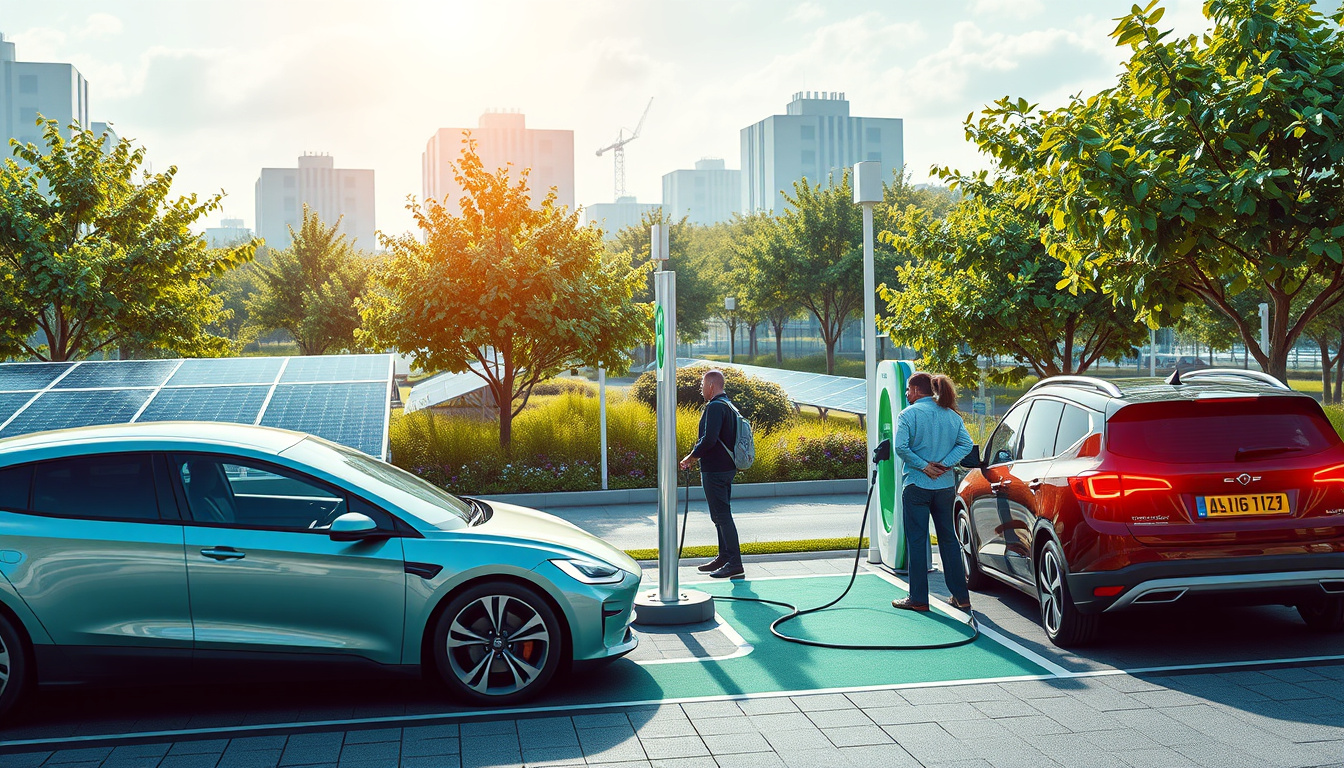The rise of bidirectional charging marks a significant turning point in the relationship between electric vehicles (EVs), homes, and the electrical grid. This innovative technology allows for the flow of electricity not only from the grid to the vehicle but also the reverse, providing new opportunities for energy management and cost savings. This article explores the implications of bidirectional charging on energy storage, its increasing adoption in electric vehicles, and its potential to reshape the future of energy consumption and distribution.
Understanding Bidirectional Charging
Bidirectional charging refers to the capability of electric vehicle batteries to both receive and supply electricity. This means that EVs can serve various roles in energy systems, acting as energy storage units that can send power back to homes (Vehicle-to-Home, V2H), to the grid (Vehicle-to-Grid, V2G), and even between vehicles (Vehicle-to-Vehicle, V2V). The potential of this technology is immense; systems with bidirectional charging can provide emergency power during outages, support grid stability, and help integrate more renewable energy sources, like solar and wind, into the grid.
The Multiple Benefits of Bidirectional Charging
-
Energy Independence and Savings: When equipped with bidirectional charging, EVs can dramatically reduce homeowners’ electricity bills by allowing them to use stored energy in their vehicles during peak pricing times. Studies indicate potential annual savings of up to €780 in Europe and $150 in the U.S. for participating EV owners.
-
Grid Resilience: As demand for electricity continues to rise, especially during peak periods, bidirectional charging can provide critical support. By enabling EVs to discharge energy back into the grid when needed, lower-cost renewable energy can be efficiently utilized, mitigating the need for expensive grid upgrades. Forecasts suggest that even at minimal EV participation rates, these vehicles could help meet substantial energy demands by 2030. 3. Virtual Power Plants (VPPs): EVs can function as distributed energy resources in VPPs, which aggregate multiple sources of energy to meet demand dynamically. This can minimize reliance on traditional fossil fuel plants, making the grid more sustainable.
Trends Driving Adoption

The adoption of bidirectional charging technology is gradually accelerating for several key reasons:
-
Market Growth: The bidirectional electric vehicle charger market is projected to witness significant growth, expected to swell from approximately $14 million in 2024 to nearly $117 million by 2032, driven largely by increasing electric vehicle sales and advancements in battery technology.
-
Automaker Innovations: Major manufacturers, including Tesla, GM, and Ford, are committing to integrate bidirectional capabilities into their EVs by the mid-2020s. For example, the Ford F-150 Lightning can power homes and businesses directly from its batteries.
-
Regulatory Support: Government incentives and policies encouraging renewable energy and EV adoption have created a favorable environment for deploying bidirectional chargers. This push promotes not only the technology itself but also the infrastructure needed to support it.
Challenges Ahead
Despite its promise, bidirectional charging still faces hurdles:
-
Infrastructure: The current lack of widespread charging infrastructure that facilitates bidirectional capabilities remains a barrier, necessitating significant investment in new technologies and retrofitting existing infrastructure.
-
Interoperability: For bidirectional charging systems to realize their full potential, compatible communication protocols and standards must exist to allow for seamless operation between vehicles, chargers, and the electrical grid.
-
Market Variabilities: As the market matures, various players—from automakers to tech firms—need to collaborate effectively to deliver reliable and efficient products and solutions.
The Future of Bi-Directional Charging
As the world pivots towards sustainable energy practices, the role of bidirectional charging in supporting this transition cannot be overstated. It is more than just a technological advancement; it represents a shift towards decentralized energy generation and consumption, where individual consumers can play an active role in the energy ecosystem.
In closing, the rise of bidirectional charging is set to empower not just the future of transport but the overall energy landscape by fostering a more resilient, sustainable, and economical system that benefits consumers, the grid, and the environment alike. As EV adoption ramps up alongside advancements in charging technology, we stand on the precipice of a revolutionary change in how we view energy consumption and storage.
——————————————————
Voltsandvolts.com is a blog dedicated to electric vehicles (EVs). Our blog features articles on EV reviews, stories, tips, tricks, charging infrastructure, and battery technology. Join the conversation and become part of the Voltsandvolts.com community today!
